九戸城は戦国時代終焉の地であり、悲しい歴史を秘めています。
Kunohe Castle was where the Warring States Period ended, and it has a sad history.
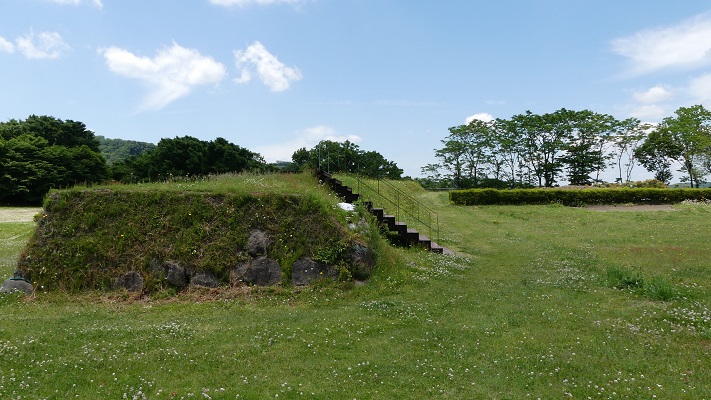
立地と歴史~Location and History
九戸城は、現在二戸市となっている二戸地区にありました。この城は、九戸地区から来た九戸氏によって築かれました。九戸城という名前は土地の名前からではなく、この氏族の名前から来ているのです。
Kunohe Castle was in the Ninohe area now called Ninohe City. This castle was built by the Kunohe clan which came from the Kunohe area. The name Kunohe Castle comes from the clan’s name, not from the name of the land.
九戸氏は、もともと戦国時代の東北地方の有力戦国大名であった南部氏の一族でした。南部晴政が亡くなった後、南部氏の後継をめぐって内紛が起こりました。南部の重臣たちは、晴政の従弟である南部信直を後継に推しましたが、もう一人の候補者を推薦した九戸政実と対立しました。信直は合議により後継に選ばれましたが、それ以来、信直と政実は対立を深めました。そしてついに1591年に政実は、信直に対し反乱を起こしました。
Originally, Kunohe clan were relatives of the Nanbu clan, the great warlord in Tohoku district in the Warring States Period. There was internal trouble about the inheritance of the Nanbu clan after Harumasa Nanbu died. The Nanbu’s senior vassals recommended Harumasa’s cousin, Nobunao Nanbu as the successor against another candidate supported by Masazane Konohe. Nobunao was chosen in their meeting, but since then, he and Masazane confronted each other. As a result, Masazane rebelled against Nobunao in 1591.
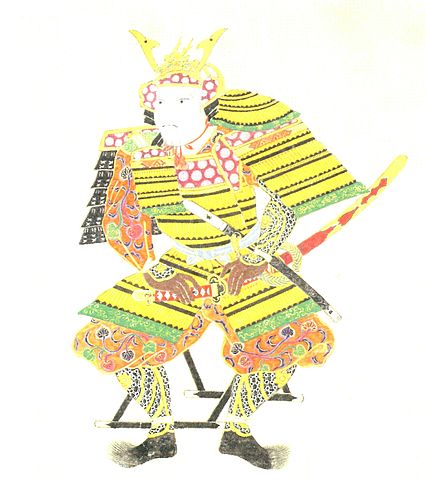
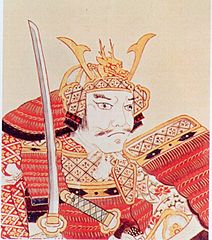
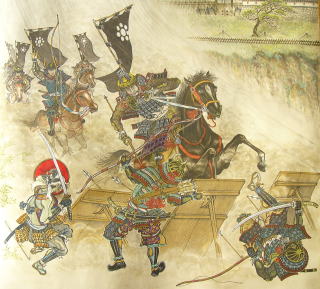
ちょうどそれは豊臣秀吉が天下統一を進め、1590年の「奥州仕置」といわれる、秀吉による東北地方の領地所有権再設定が行われた直後でした。この反乱はこの奥州仕置によって引き起こされたのかもしれません。なぜなら、政実は強制的に信直の配下にさせられてしまったからです。信直は秀吉に助けを求め、秀吉は蒲生氏郷と浅野長吉に約6万の兵を預け、九戸城に派遣しました。そこにいた政実方の守兵はわずか約5千人でした。1591年の9月のことです。
That happened during the unification of the whole country by Hideyoshi Toyotomi, just after the reassessment of his territorial ownership in Tohoku district called “Oshu-Shioki” in 1590. The rebellion might have been caused by Oshu-Shioki because Masazane was forcibly put under Nobumasa. Nobumasa asked Hideyoshi for help, then Hideyoshi sent about 60 thousand troop led by Ujisato Gamo and Nagayoshi Asano to Konohe Castle where Masaane was with about only 5 thousand defenders in September, 1591.


九戸城は河岸段丘上の天然の要害であり、川や谷に周りを囲まれていました。「九戸党」と呼ばれた守兵も強力で、最初の攻撃を撃退しました。攻撃側は強引な攻撃による兵の損耗を憂え、政実に降伏するよう勧告しました。彼は数日のうちに、女性子どもを含む城内人員の生命の保証を条件に受け入れました。しかしながらその約束は破られ、攻撃側が城を確保した後、多くの人たちが虐殺されました。政実もまた斬首されたのです。発掘により、二ノ丸から処刑された男女の骨が見つかっています。この九戸政実の乱は戦国時代最後の戦いであると言われています。
Kunohe Castle formed a natural fortress which was on river terraces surrounded by rivers and valleys. The defenders called “the Kunohe Party” were also so strong that they repelled the first attack. Attackers were worried about casualties from aggressive attacks, so they suggested Masazane to surrender. He accepted it in a few days in exchange for the safety of the people in the castle including women and children. However, the promise was broken and many people were executed after the attackers got the castle. Masazane was also beheaded. The excavation shows bones of executed men and women buried in the second enclosure “Ninomaru”. It is said that the Kunohe Rebellion is the last battle of the Warring States Period.
城周辺の起伏地図~The relief map around the castle
城周辺の航空写真~The aerial photo around the castle
特徴~Features
現在、城の本丸と二ノ丸が主に史跡として整備されています。
Now, the ruins of the main enclosure “Honmaru” and Ninomaru mainly remain developing for a historic site.
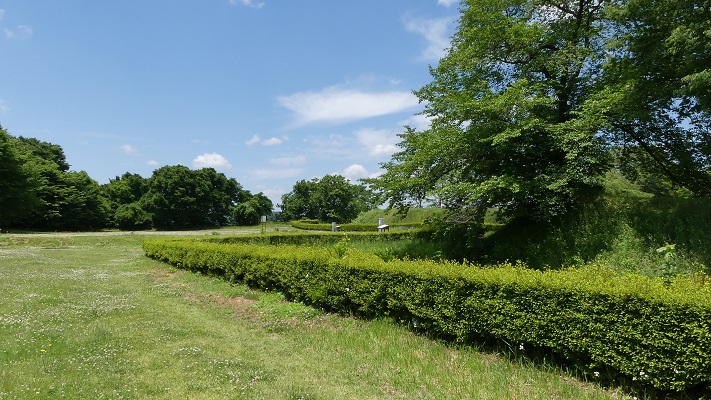
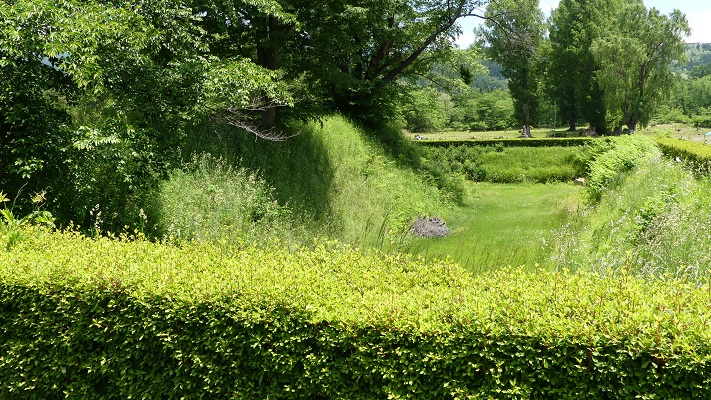
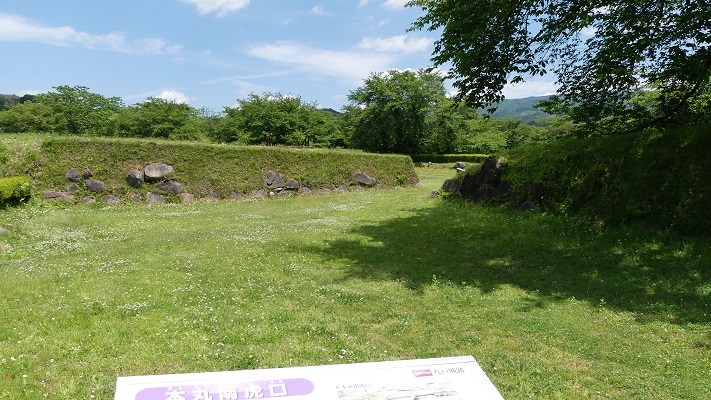
東北地方では一番古い石垣がありますが、実は蒲生氏郷により築かれたものです。The oldest stone walls in Tohoku region were actually rebuilt by Gamo.
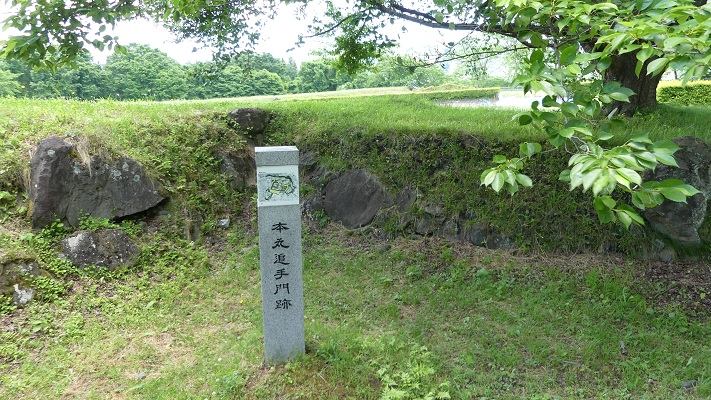

「若狭館」「外館」といった他の曲輪は、九戸にもともとあった形を残しているようです。
Other enclosure ruins such as “Wakasa-Date” and “To-Date” are more likely in the original way of Kunohe.
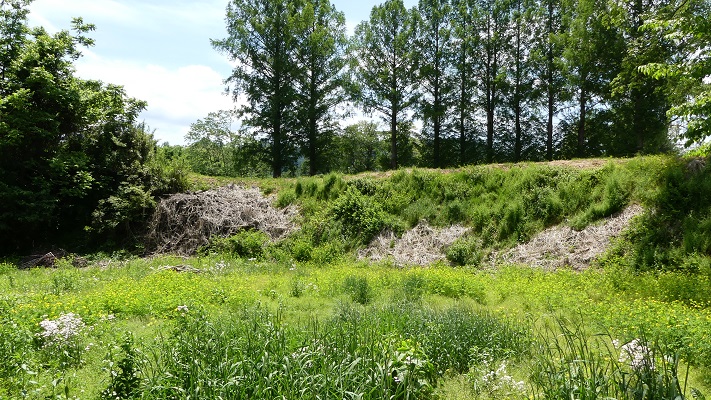
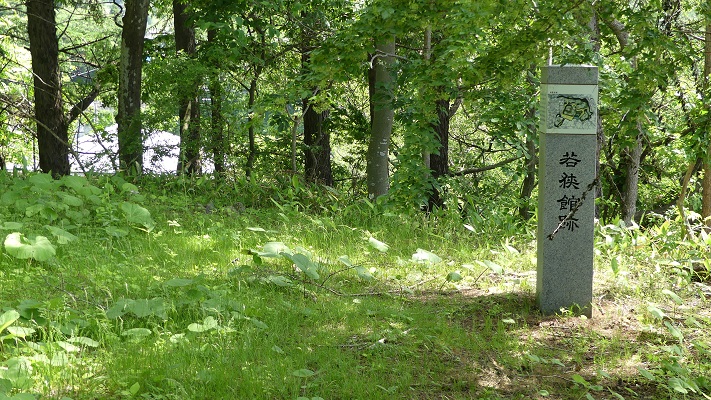
今でも歩き回れば、この城が自然の地形により守られていたかがわかります。一例として、以前三の丸だった所にあるガイドハウスから本丸を見上げてみましょう。
Even now you can understand how the castle was protected by natural landscape when walking around. For example, you can look up at Honmaru from the guide house on the former Sannomaru enclosure.
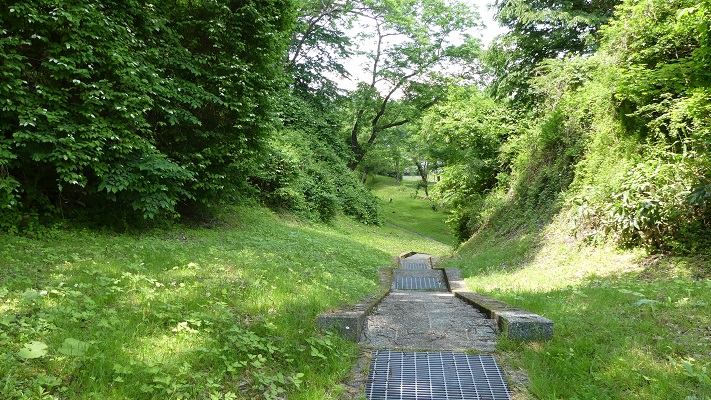

その後~Later Life
九戸政実の乱の後、城は蒲生氏郷によって再建され、南部信直に引き渡されました。そして九戸城から福岡城に名前が変えられました。しかし二戸の人々は「九戸城」と呼び続けました。南部がすぐに盛岡城に移転したことと、九戸への懐旧の念もあったからでしょう。城は1636年に廃城となり、畠となりました。近代になって、1893年に農業試験場がここに開設されました。最終的に1935年に国の史跡に指定されました。
After the Kunohe Rebellion, the castle was reconstructed by Gamo, and owned by Nanbu, and it was renamed from Kunohe to Fukuoka. But people in Ninohe area have been calling it “Kunohe” because of Nanbu moving to Morioka Castle soon after as well as their nostalgia for Kunohe. The castle was abandoned in 1636, turned into a farm. In the Modern Ages, an agricultural experiment station was opened in 1893, it was lastly designated as a national historic site in 1935.
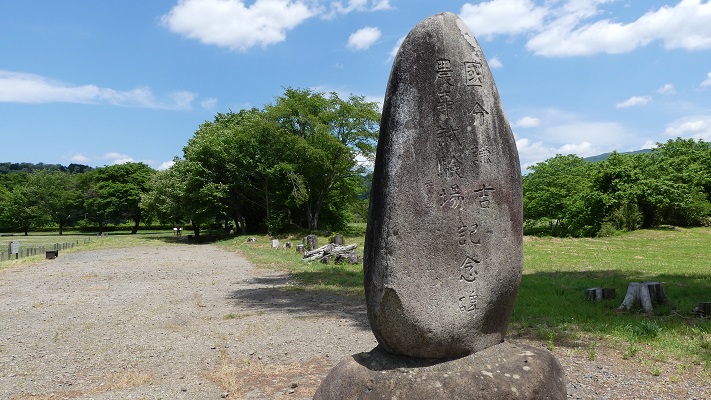
私の感想~My Impression
九戸城のいきさつは今だ謎めいています。なぜ政実は、守るには有利な冬を前にしてすぐ降伏してしまったのでしょう(旧暦の9月は現在の10月に相当します)。なぜ秀吉は中央から彼方にある場所に、このように少数の反乱者のためにこんなにも多くの兵士(後衛を含めると15万人)を送り出したのでしょうか。そして九戸党は豊臣方の暴挙に対して成す術がなかったのでしょうか。
The story of Kunohe Castle is still mysterious. Why did Masazane surrender in a moment before the winter that would be an advantage for defenders (September in the lunar calendar is similar to October now)? Why did Toyotomi send so many soldiers (150 thousand including the rear) for such a small number of the rebels to the place far away from the center? And, did the Kunohe Party do noting against Toyotomi’s violence?
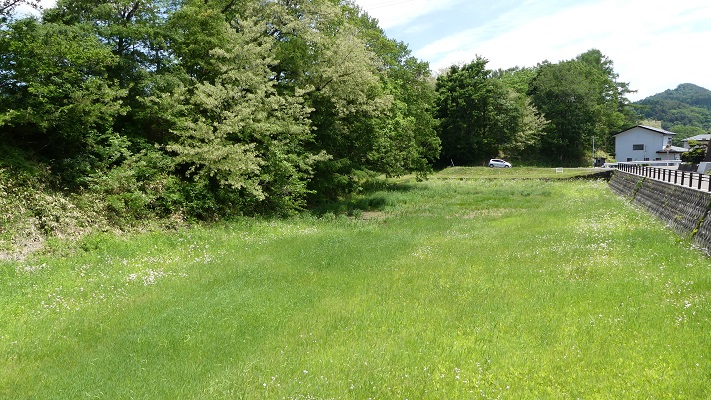
作家たちは、その作品において推測し、仮説を立てています。例えば高橋克彦は、政実は自分を犠牲にして南部の諸族を救ったのだと言います(信直は別として、一族の津軽為信は大名として生き延びました)。安部龍太郎は、秀吉は1592年の朝鮮侵攻のために、寒さに強い東北地方の人々を徴発しようとしたとしています。政実はそれを知り、九戸城を犠牲にし戦いを終わらせ、その実行を防いだとしました。そして両方の作家とも抜け道を使って多くの人が逃れ出たはずだと推測しています。歴史の謎について考えるのはとても興味深く、また真実に至る道なのかもしれません。
Some writers speculate and offer their assumptions in their novels. For instance, Katsuhiko Takahashi says Masazane sacrificed himself to save the Nanbu relatives (Beside Nobunao, another relative Tamenobu Tsugaru, once supported Masazane, survived as a lord.). Ryutaro Abe wrote Toyotomi might have aimed to draft Tohoku people being strong in the cold for his invasion of Korea in 1592. Masazane had known it, then he has ended the war to prevent it from happening at the sacrifice of Kunohe Castle. Both writers also speculate many of people should have escaped from the castle by a secret path. Thinking about mysteries of history is very interesting, and it may be a key to finding the fact.
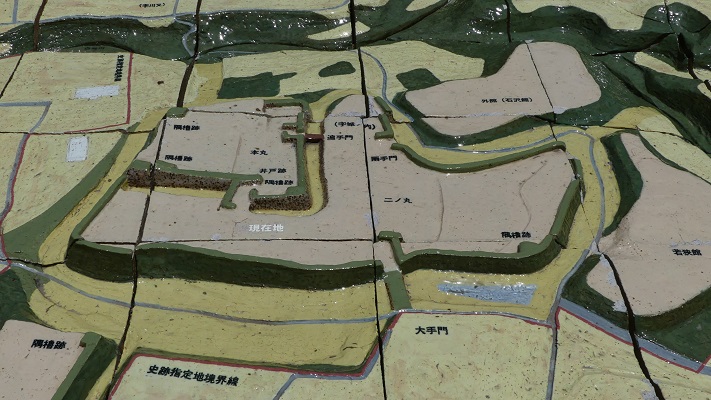
ここに行くには~How to get There
車で行く場合:八戸自動車道一戸ICから約15分かかります。ガイドハウスに駐車場があります。
二戸駅からバスで行く場合:JRバス(県立二戸病院または軽米病院行き)または岩手県北バス(伊保内営業所行き)に乗り、呑香稲荷神社前バス停で降りてください。城跡はバス停から歩いて5分です。
東京から二戸駅まで:東北新幹線に乗ってください。
If you want to go there by car: It takes about 15 minutes from the Ichinohe IC on Hachinohe Expressway. The guide house offers a parking lot.
If you want to go there by bus from Ninohe station: Take the JR bus bound for Kenritsu-Ninohe-Byoin or Karumai-Byoin, or the Iwate-Kenpoku bus bound for Ibonai-Eigyosho , and take off at the Tonko-Inari-Jinja bus stop. The ruins are a 5 minute walk away from the bus stop.
From Tokyo to Ninohe st.: Take the Tohoku Shinkansen super express.
リンク、参考情報~Links and References
・岩手県二戸市 九戸城跡~Ninohe City Official Website
・二戸市商工会(Only Japanese)
・九戸政実プロジェクト「戦国ダンシ九戸政実」(Only Japanese)
・「歴史群像158号~戦国北奥戦記」(Japanese Magazine)
・「天を衝く(1)~(3)」高橋克彦著、講談社文庫(Japanese Book)
・「冬を待つ城」安部龍太郎著、新潮文庫(Japanese Book)
・「南部九戸落城」渡辺喜恵子著、毎日新聞社(Japanese Book)
